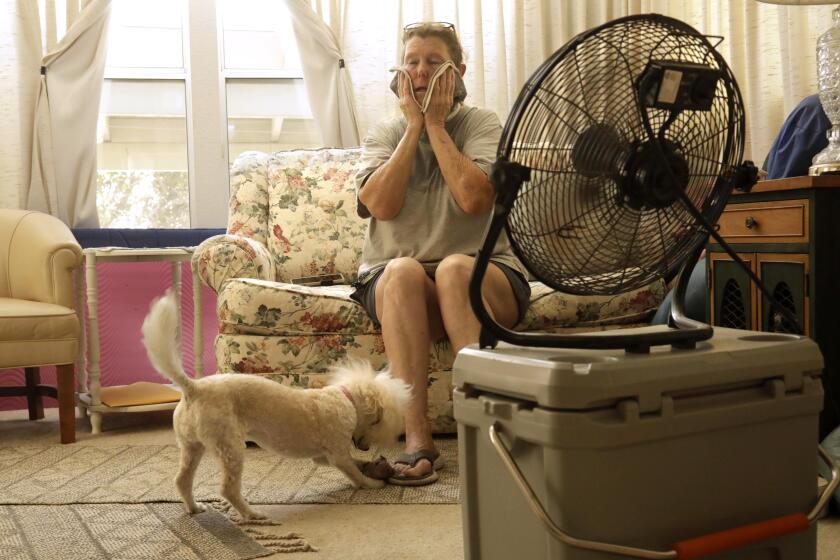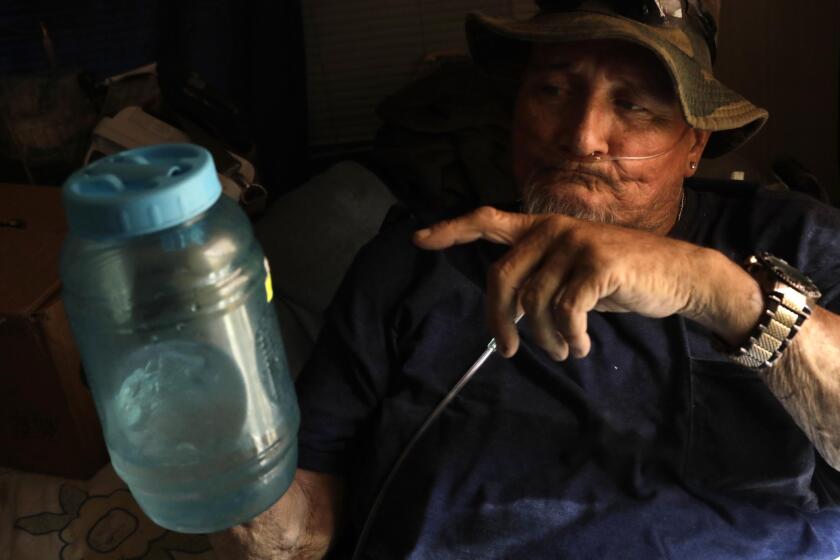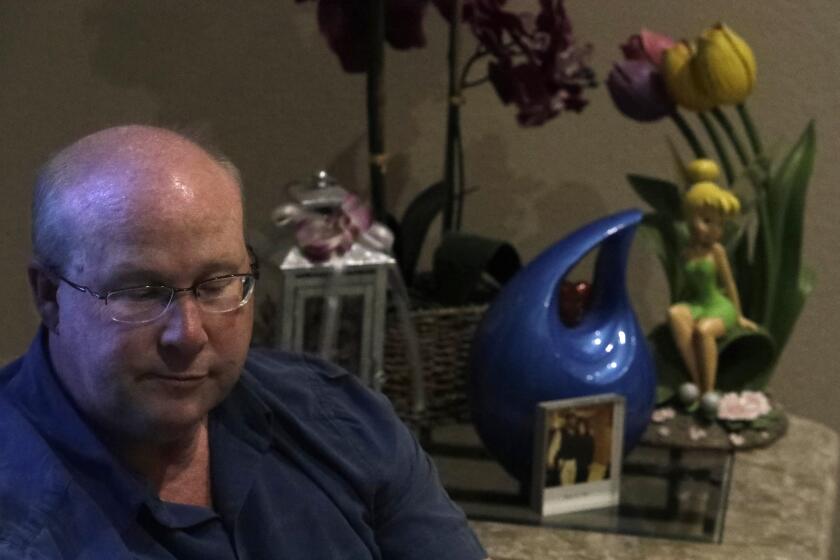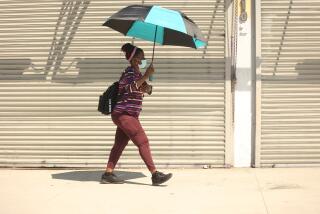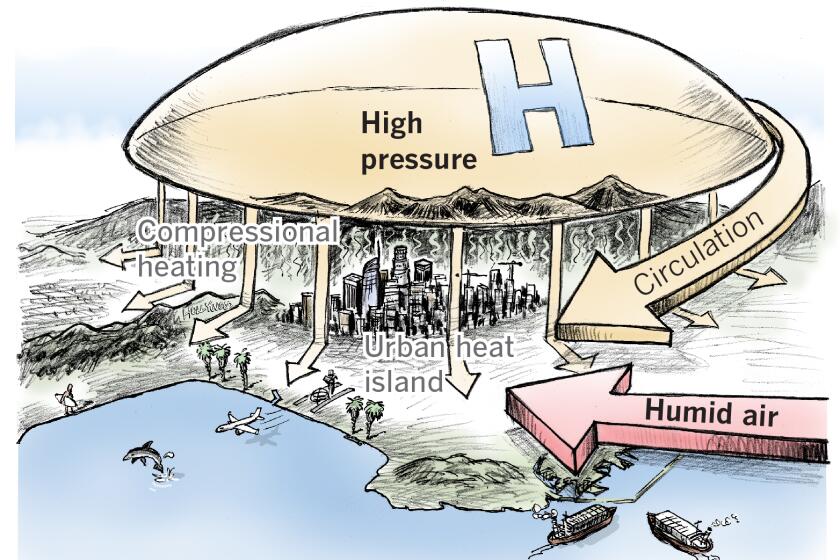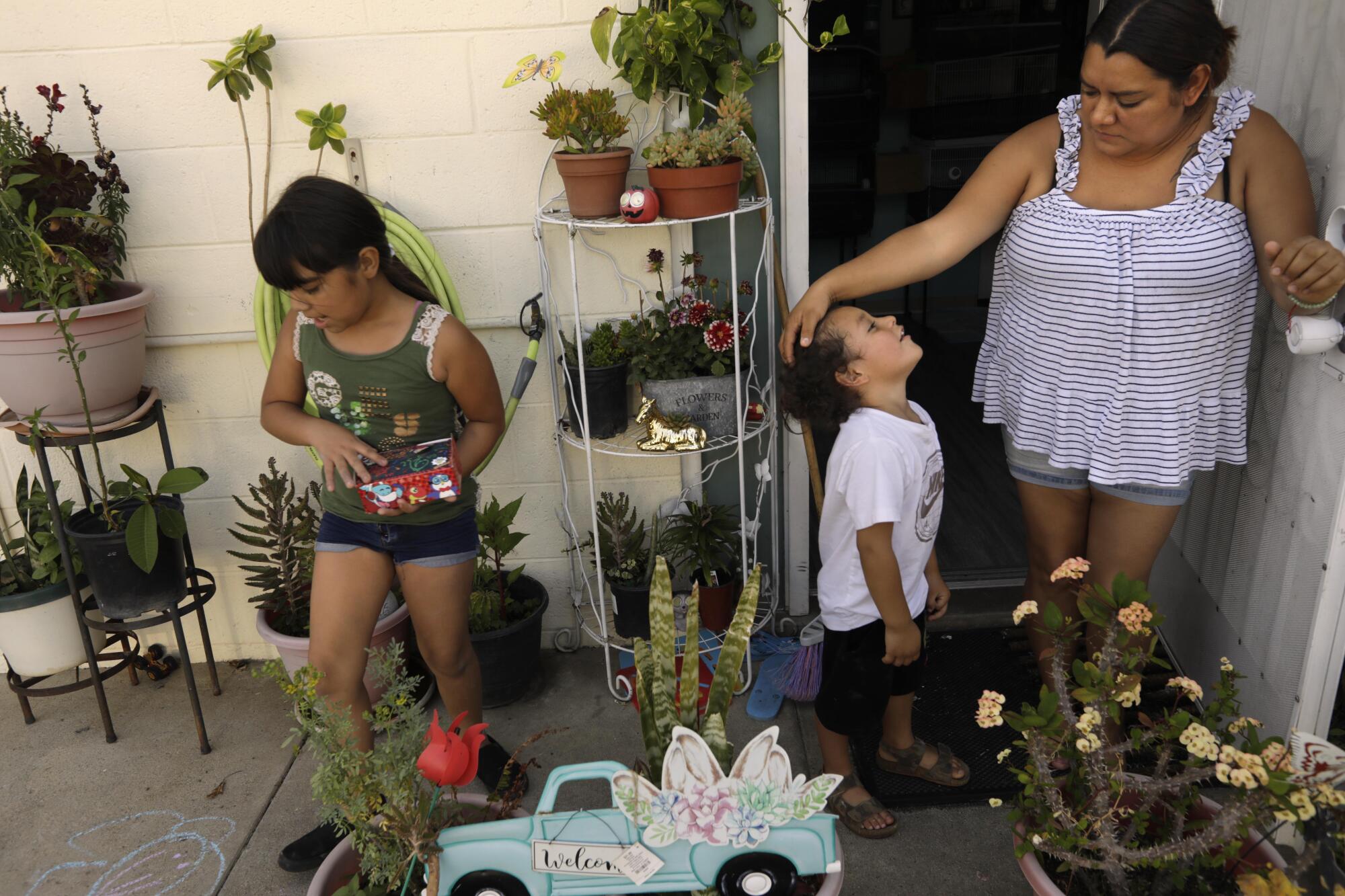
With climate change triggering increasingly severe heat, Californians will need to prepare themselves for temperature extremes just as they do for earthquakes and other disasters.
What do you need to know about heat-related illnesses? How can you identify, treat and prevent them?
We sought answers from experts who study climate change and its effects on the human body. These include Dr. Bud Cooper, professor of kinesiology at the University of Georgia; Kim Knowlton, senior scientist for the Natural Resources Defense Council; Andrew Grundstein, professor at the University of Georgia; Jaime Madrigano, policy researcher at Rand Corp.; and Larry Kalkstein, a scientist with Applied Climatologists.
California chronically undercounts the death toll from extreme heat, which disproportionately harms the poor, the elderly and others who are vulnerable.
What stressors can trigger a heat-related illness?
It’s not just the air temperature. There are other factors to consider:
Humidity: Hot, sticky air impedes the body’s ability to cool itself naturally, because the moist atmosphere doesn’t allow for sweat to evaporate as easily, causing you to continue to get warmer. If the humidity is lower, you’re less likely to succumb to a heat-related illness.
Wind speed, sun angle, cloud cover: All these can raise or lower the risk of illness. That’s why researchers don’t rely on the typical heat index to measure the potential for heat-related illnesses on a given day, Grundstein said. They instead use the wet bulb globe temperature, which takes into consideration temperature, humidity and other factors.
Acclimatization: It’s important to let your body acclimate to the surrounding environment, especially if you are exerting yourself. If you’re not used to running out in the sun, Grundstein said, maybe don’t start with a 5-kilometer race. Or if you’re not accustomed to wearing heavy gear in 100-degree heat, think about postponing your community football game.
Weight, lifestyle, medications, hydration: All can affect how someone reacts to heat, Knowlton said.
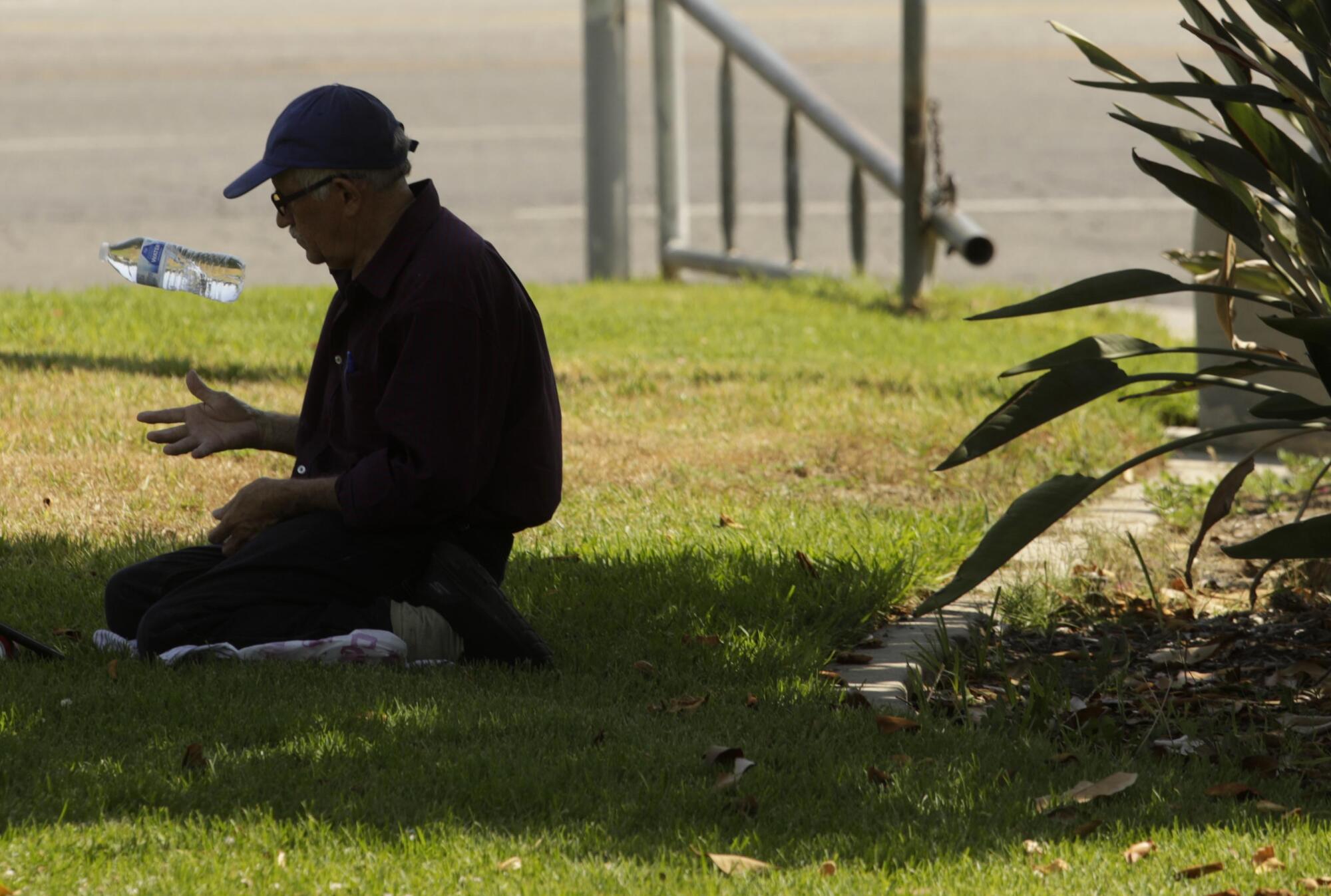
Read all of our coverage about how California is neglecting the climate threat posed by extreme heat.
Is there a progression of heat-related illness?
Yes, but the stages of illness are not necessarily chronological. Severe symptoms can show up with little or no warning, Cooper said. Here are the various stages, from the mildest to most severe:
Exercise-related heat cramps: Common for people doing outdoor activity.
- Symptoms: Cramps in the legs, an elevated core temperature and signs of dehydration. Don’t trust your thirst as a measure of your hydration level, Cooper said. Instead, look at the color of your urine. Medium to dark yellow is a sign that you’re dehydrated; light to clear urine means you’re probably OK.
- Treatment: Stop the activity and get out of the sun. Ingest a sports drink with electrolytes. Stretch later in the day. Take your time getting back to the activity you were performing.
Heat syncope: More serious than cramping, this could potentially cause internal damage.
- Symptoms: Dizziness, feeling faint, red skin, an increased core temperature.
- Treatment: Get to a cool area. Elevate legs to promote blood flow to the heart. Place a cool compress in the groin or armpits. Because of the elevated nature of these symptoms, Cooper said, you would need to be seen by a medical professional right away and receive fluids via an IV.
Heat exhaustion: This requires you to call 911, Cooper said, to receive immediate medical attention.
- Symptoms: An internal body temperature of over 104 degrees, lethargy, dizziness, inability to communicate, headache, a dip in cognitive abilities, fainting and profuse sweating.
- Treatment: Follow instructions for heat syncope, and also remove excess clothing or equipment. Wet a towel and wrap it around the trunk of the body. Call 911.
Heatstroke: The most serious of all heat-related illnesses, heatstroke is an immediate emergency and must be treated right away.
- Symptoms: An internal body temperature over 104 degrees, loss of consciousness and possibly dry skin. Lack of sweat because your natural cooling system is compromised.
- Treatment: Get to a cool place and call 911.
Utilities have funds available to install air conditioning in low-income households, but for one California family, help did not come soon enough.

What are the effects of long-term heat exposure?
Long-term effects can include “kidney damage, long-term neurological effects, headaches, blurred vision, cardiac ailments, chest pain, increased risk of heart attack and an overall increased risk of premature mortality that persists for years,” Knowlton said.
What can you do to stay safe and healthy?
In a warming world, heat waves are expected to increase in duration and intensity. But there are things you can do, and shouldn’t do, to keep yourself and your family healthy and safe.
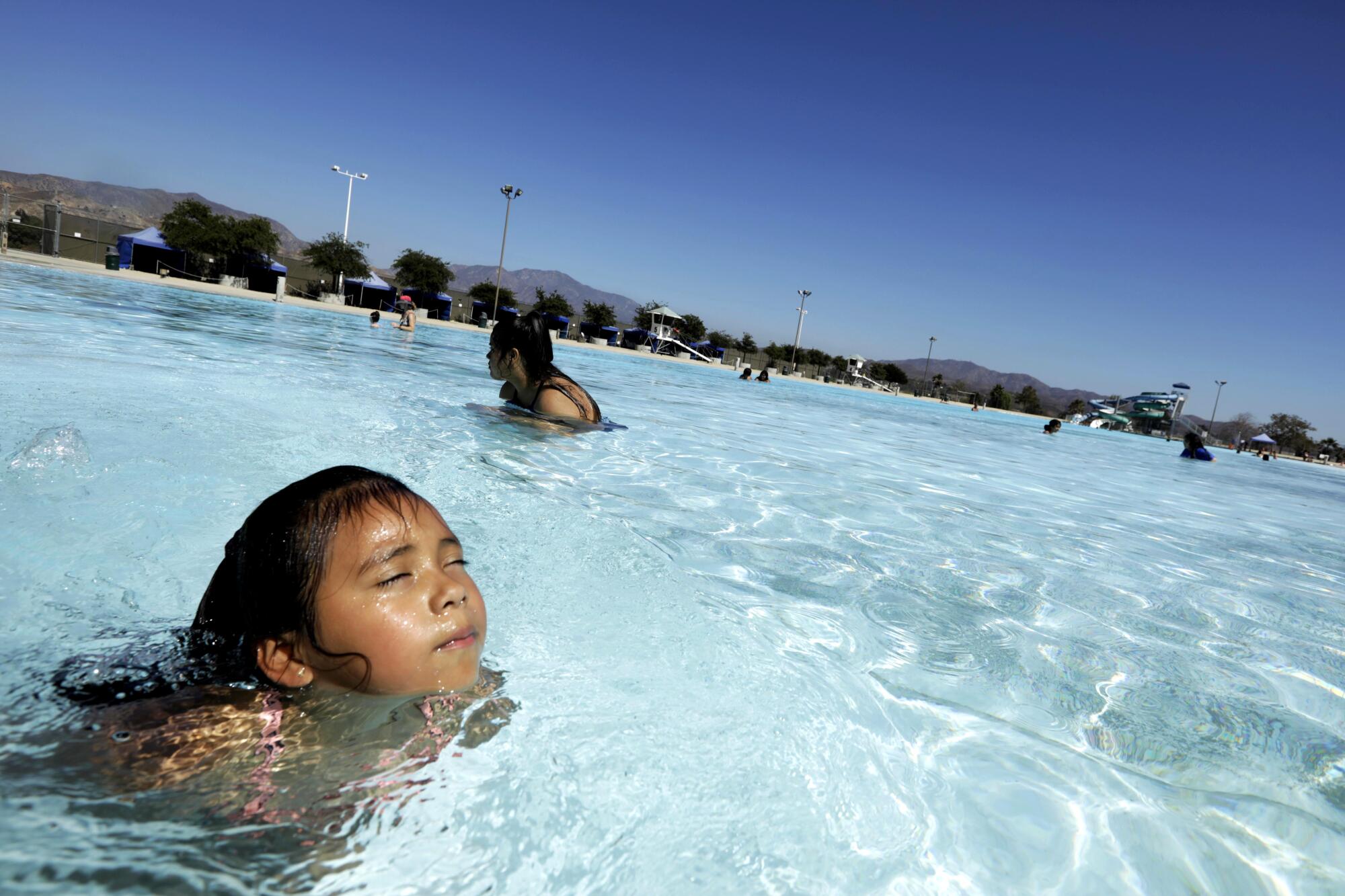
Do: Drink a lot of water, more than you normally would.
Do: Go to one of the county’s cooling centers if you can’t get cool at home.
Do: Visit a public library for a few hours to cool down.
Do: Catch a movie at the theater or go to a mall to get out of the heat.
Do: Take cold showers and baths, throughout the day if you can.
Do: Face your fan toward a window so it’s forcing hot air out of your home.
Don’t: Point a fan directly at yourself in a hot or non-air-conditioned home, said Kalkstein, who has studied heat-related deaths in California and other states. It can have the unintended effect of dehydrating you faster.
Don’t: Run your air conditioning (if you have it) all day, especially if there’s a flex alert issued.
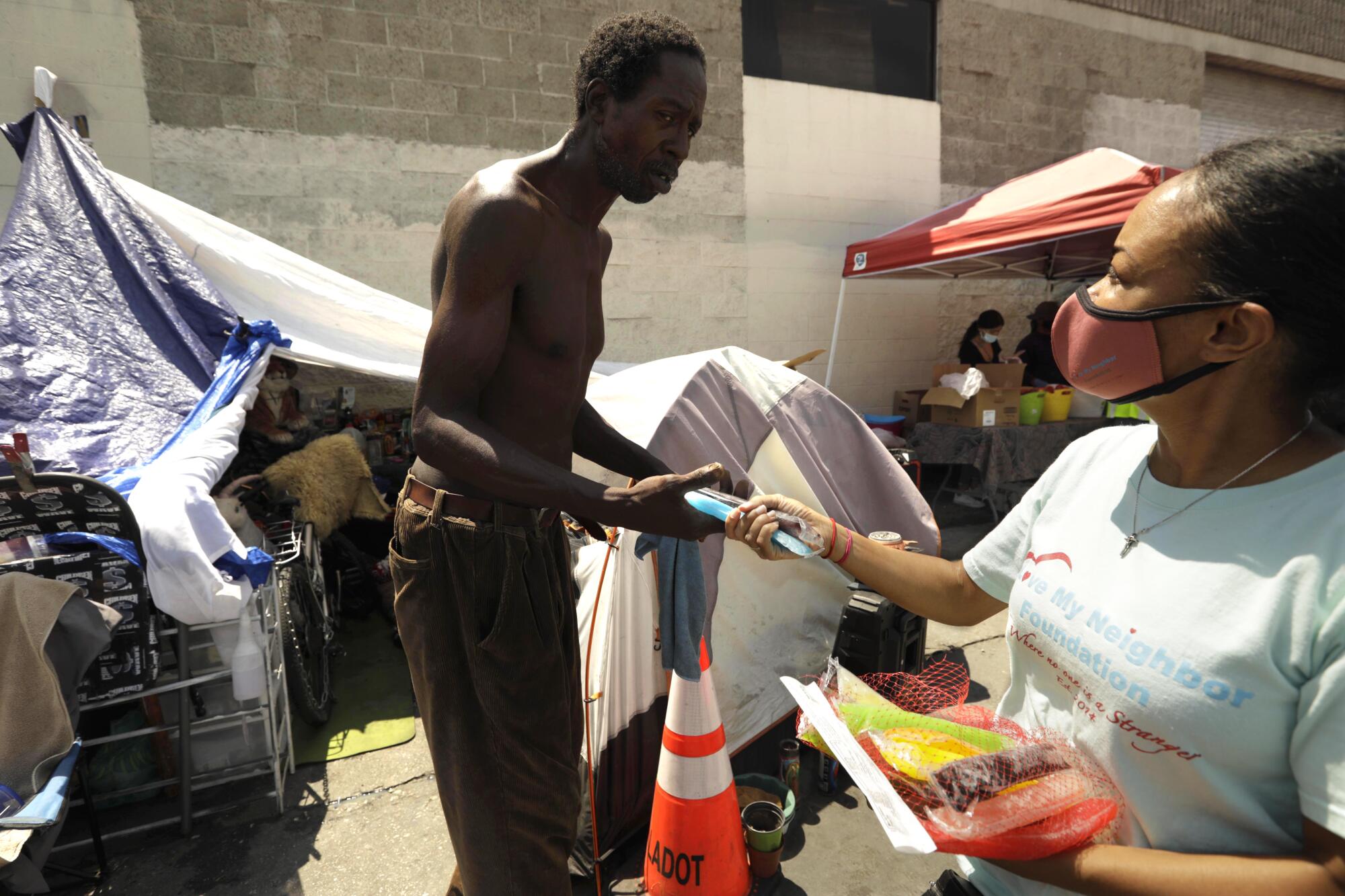
What can you do to help family and neighbors?
Don’t just look out for yourself. Madrigano suggests checking in with the most vulnerable people you know during times of intense heat. This can include the elderly, the disabled and the unhoused. Give your neighbors or family members a call and see how they’re doing. Do they need anything? Offer to bring over water or go grocery shopping for them so they can stay cool.
Homeless people are extremely vulnerable during times of high heat. Take Water Drop LA’s challenge of taking 20 minutes out of your day to hand out frozen water bottles to your unhoused neighbors. Reach out to organizations working with the unhoused community and see what their needs are and what you can do to help.
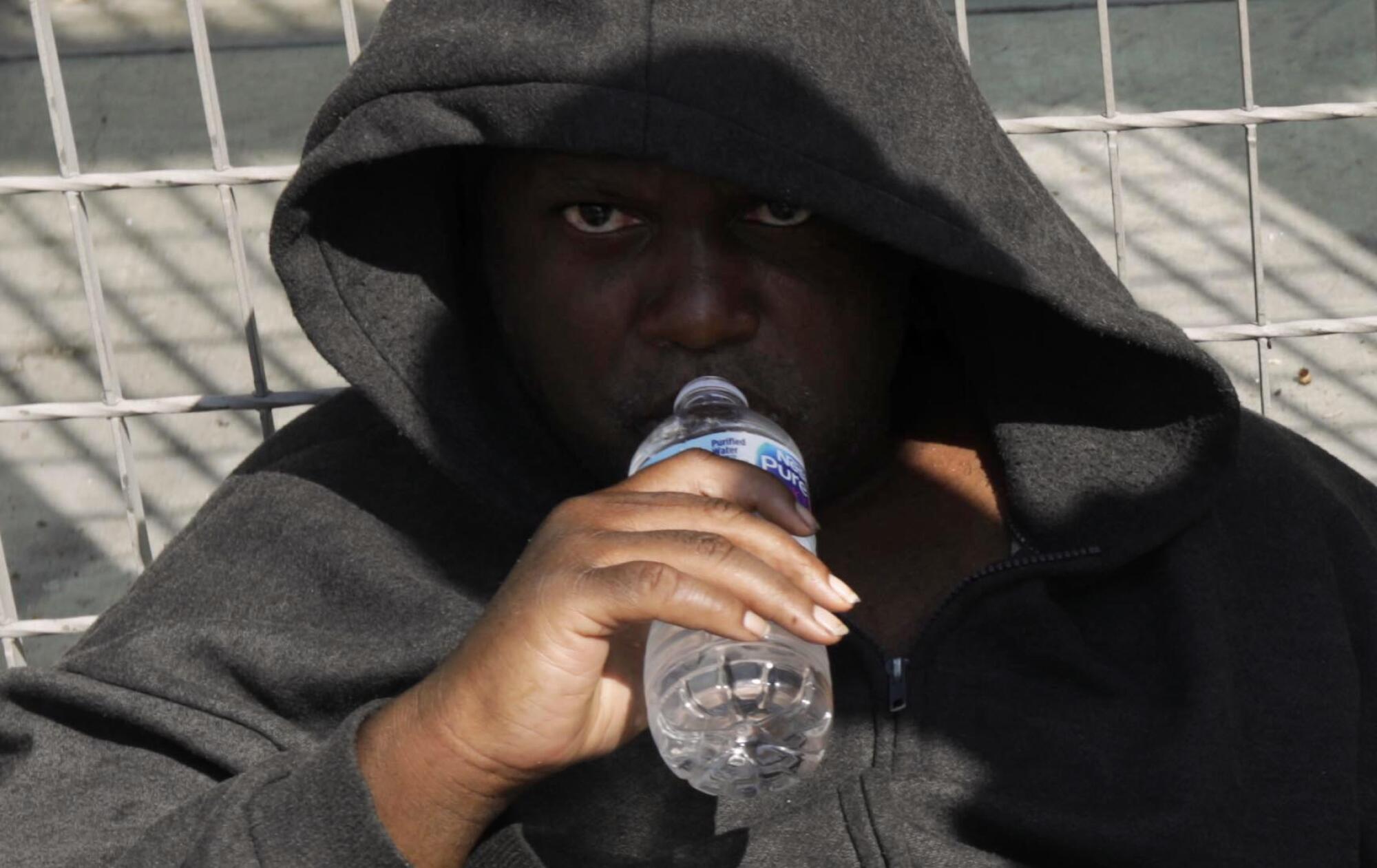
Try keeping a tab open on your phone of the locations of the county’s cooling centers and public libraries so you can offer directions to those who need it.
Staying safe and healthy must be a community effort, Madrigano said. She encourages Angelenos to reach out to vulnerable neighbors, “be kind,” and help where you can.
